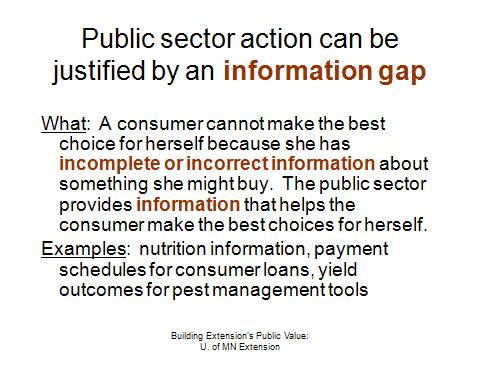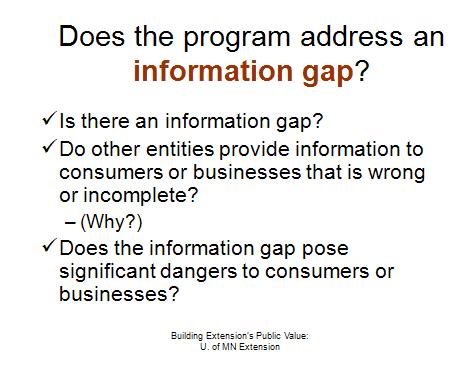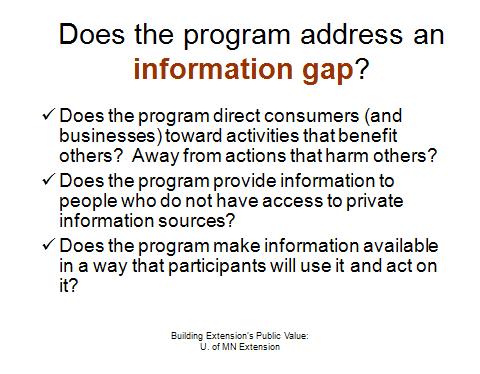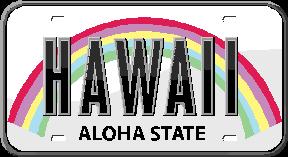Using cultural diversity to narrow an information gap
One of the ways Extension and other outreach programs can build public value is by providing information that allows consumers and business owners to make better choices. In other words, Extension programs help to close the “information gap” that prevents people from doing the best they can for themselves and their businesses.
In the “Building Extension’s Public Value” workshop, I caution participants about over-using the information gap as an argument for Extension program funding. All of our programs provide information, but if we try to use a single argument to justify all of our programs, we are unlikely to be successful. I suggest that we reserve the information gap argument for cases where it is likely to be strongest. Which cases are those? I think that when you can answer “yes” to at least some of the following questions, you can make a strong case with the information gap.
Take a look at the fifth question on the list, providing information to people who would not otherwise have access. The variety of ways that Extension programs address access includes providing information at low or no cost, bring programs to geographically isolated areas, giving people materials written in their native language, and delivering information in ways other than through written materials.
At a recent BEPV workshop for the University of Hawaii Cooperative Extension Service, a participant suggested that cultural norms could also create a barrier to accessing and using Extension’s information. For example, traditional gender or generational roles might prevent some members of a community from participating in a program. When we identify and address such barriers–indeed, when we allow cultural differences to inform and enrich our programs–we can be more successful in closing the information gap and building public value.
Incidentally, it is not at all surprising that the suggestion to consider cultural norms arose at the Hawaii workshop. Culture is deeply valued by the residents of the 50th state, which has the highest ethnic minority population in the nation. Mahalo, Hawaii, for reminding us to consider both cultural barriers and cultural contributions to Extension programs.


